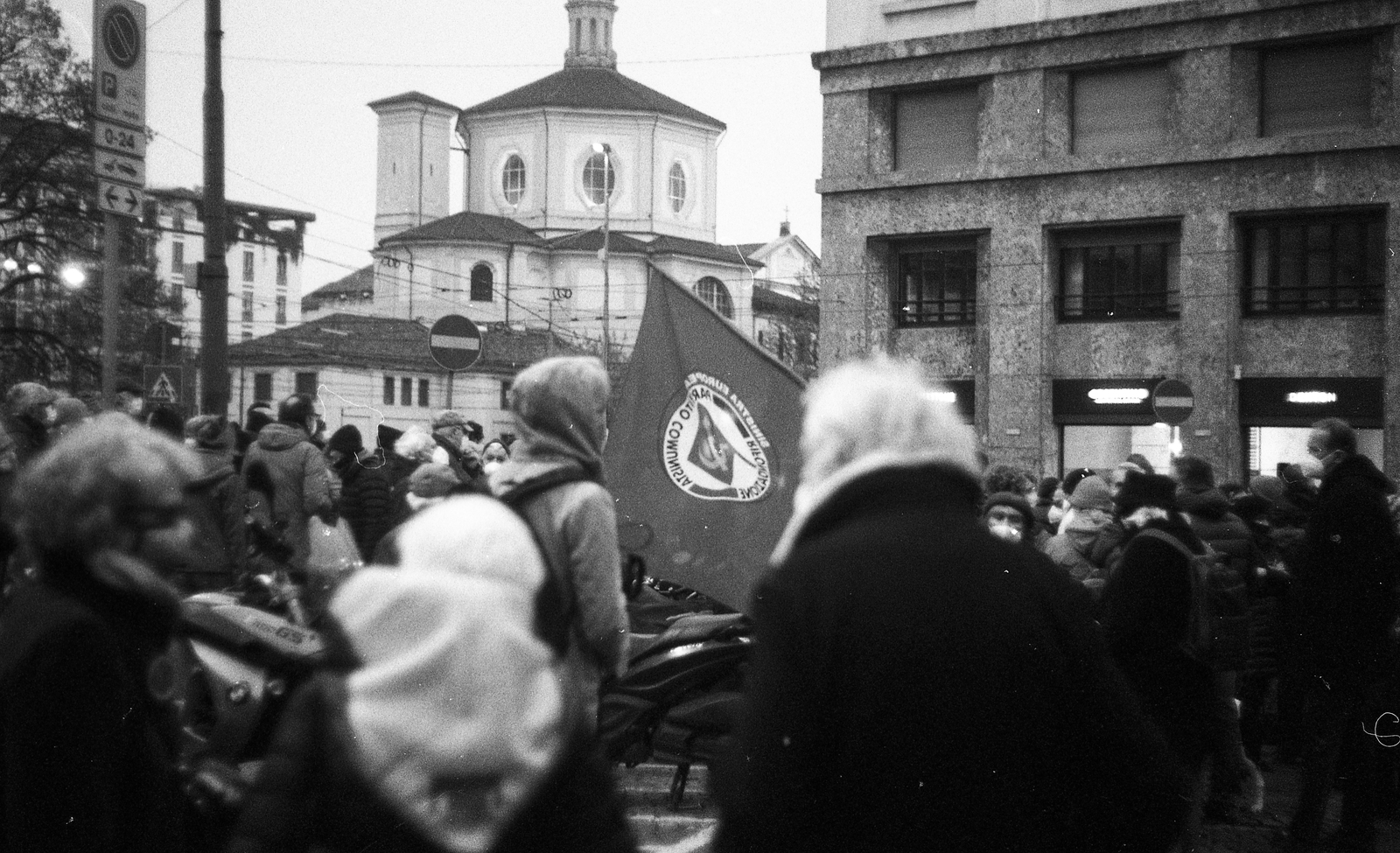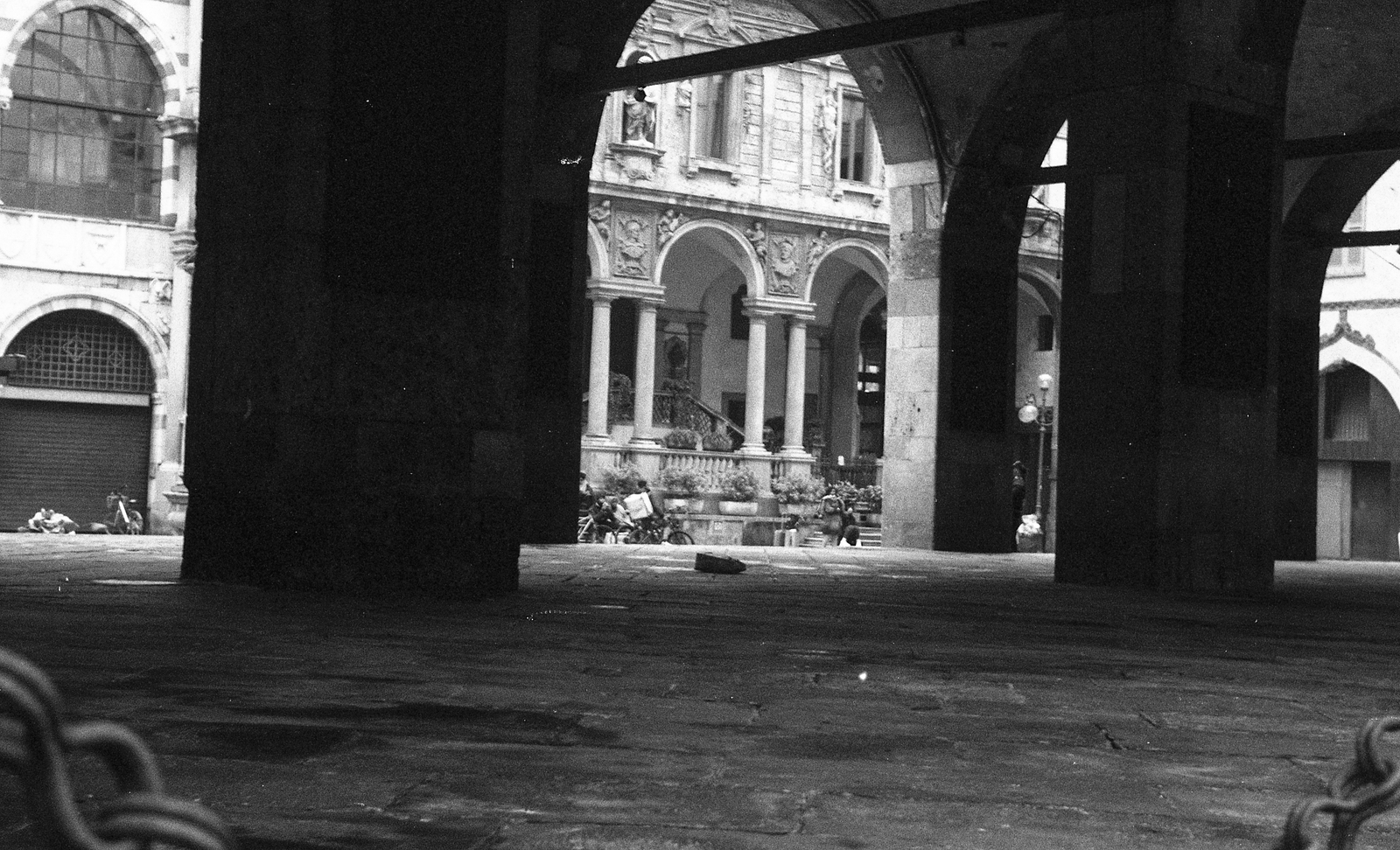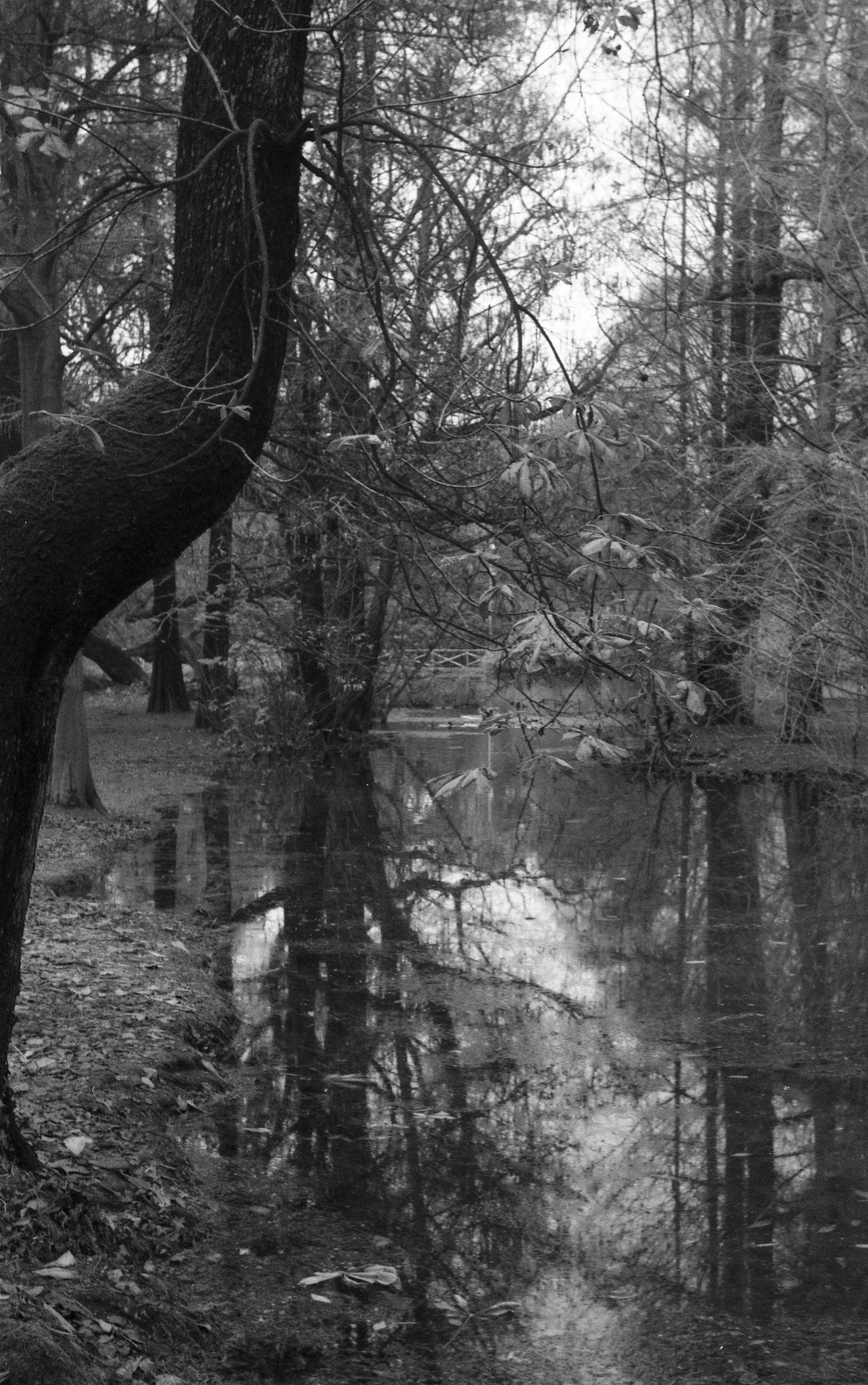TOC
2020 was a challenging year for many, so it seemed right to end it by giving myself a small treat. I was lucky enough to find one of those so-called “mint with box” cameras on my hands. I know that behind these words often lies a scam, but in this case, the shop was not lying, and the device was brand new. By new I mean never opened, still wrapped in cellophane, and without ever taking a roll.
The Bessa R, this is it, was not quite at the top of my buying priorities. I don’t have any valid m39 lenses in my kit, and I’m not particularly interested in a rangefinder. At the same time, however, the price was attractive and the curiosity a lot, so I bought it intending to resell it, but not immediately! First, I wanted to experience the thrill, lost for us millennials, of opening a new camera and inserting the film. I didn’t want the unboxing to be an end in itself, but the first contact with a machine I didn’t know. So I found myself wandering around Milan for an afternoon with a friend, trying to understand the user experience. The Bessa immediately turned out to be better than expected, and I can already say that she does not look her age. It is a camera that has kept its freshness and certainly not only because of the box.
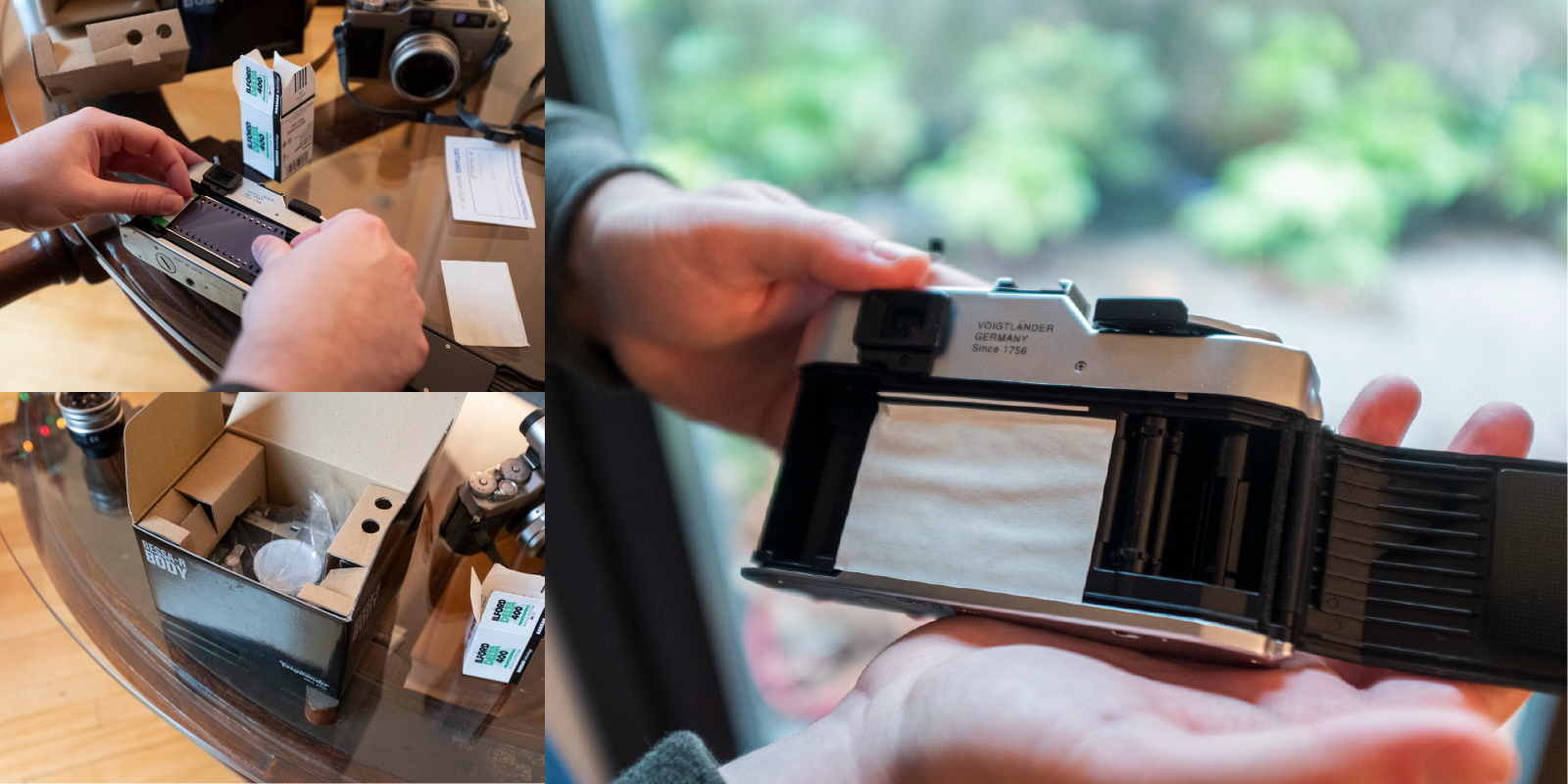
The carefull unboxing process with the camera still presenting its original paper inside to cover the shutter curtains.
The R is one of those unfortunate film cameras born fifteen years too late. Presented by Voigtlander in 2000 in an already digital world, it was not successful, despite a competitive price. The reasons were many and not only related to the disappearance of analog photography. We are two years before the launch of the M7, Wetzlar’s last film camera, and the Contax G2 will be out of production only in 6 years. Making too many compromises in the design proved fatal: the splendid viewfinder was worthy of the M series, but the bayonet was instead a screw mount. The plastic body contained the weight very well and had a resistant feeling, but it was certainly not a premium material. The design itself was perhaps too innovative for a camera genre that was increasingly becoming the vintage & nostalgic version of itself.
None of these alleged flaws mattered in practical use, except perhaps the need to use M39 lenses. At home, unfortunately, I only had Soviet junk and a beat-up, albeit faithful, Summitar. The choice unequivocally fell on the latter, which, however, proved to be inferior to a formidable machine body. The viewfinder is fantastic and alone is enough to tempt you to shoot. The controls are few but essential, well-positioned, also hard enough. It is a machine that is a pleasure to shoot with, and it is easy to find harmony.
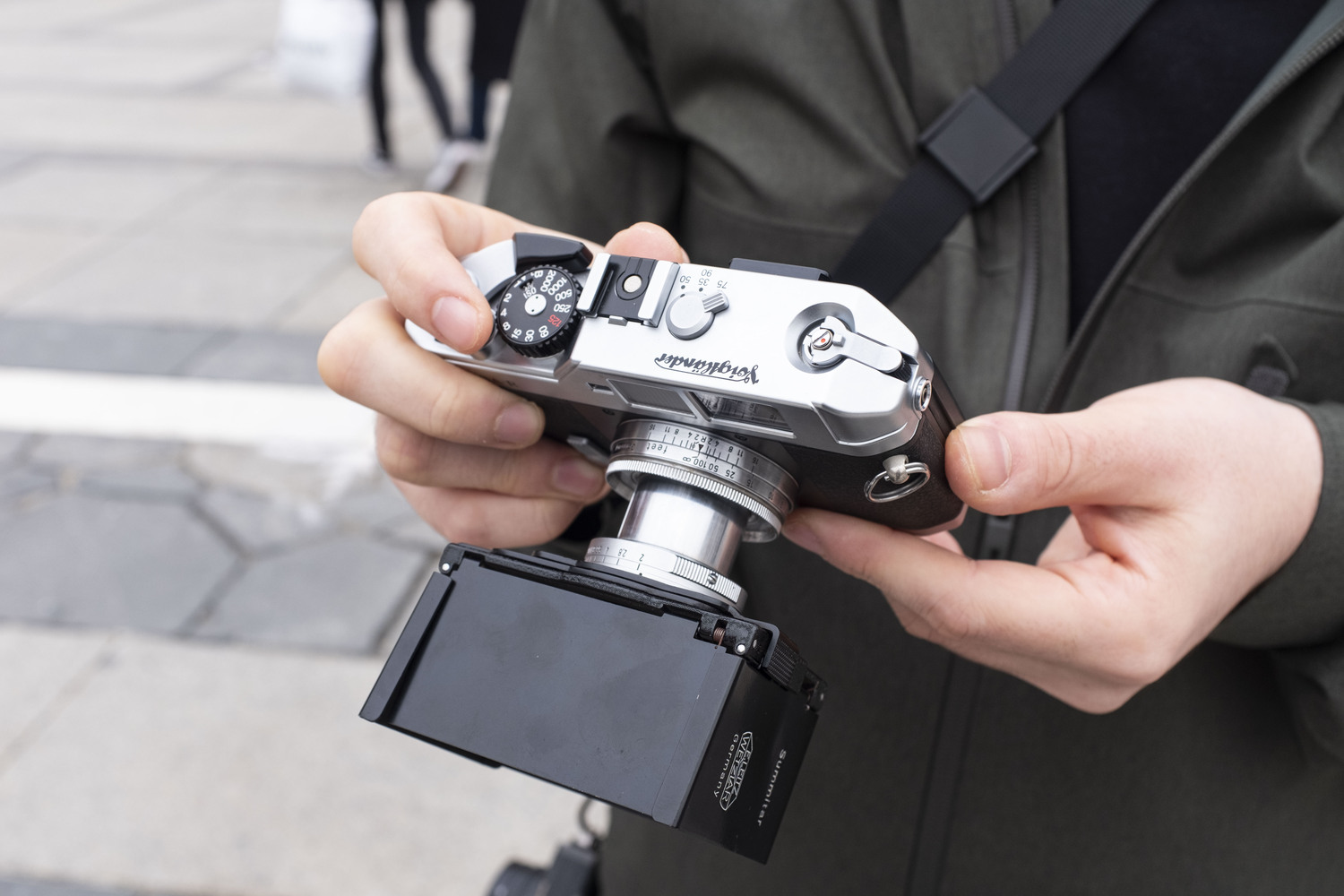
The camera with the worn-out Summitar and its original wrong-mounted hood
In one afternoon, the camera not only digested a whole roll of film but also delivered some nice pics even without a decent lens. We are talking of a very well thought out camera suitable for those who want to shoot with M39 lenses with modern conveniences. However, it is not a camera that I recommend, or rather, not to everyone. Leica M39 lenses are a big caveat: produced before the M, and today they show all their limits while remaining valid. You could opt for the Voigtlander M39 lenses, built in the 90s. However, these are often super wide-angle lenses, so I wonder if it is no longer sensible to buy the L, practically identical, but without a viewfinder. You would go to use an external viewfinder in any case (the frames of the R are 35, 50, 75, and 90) and would save space and money. The qualities of the Bessa, however, are present and indisputable. An innovative design, a very bright viewfinder, and the modern concept underlying the project cannot be ignored. It is not a camera that I will keep, but it certainly is something that intrigues me: it made me want to try the rest of the R series, in particular the R2, capable of mounting M mount lenses, at a much lower cost than an M6 / M7.
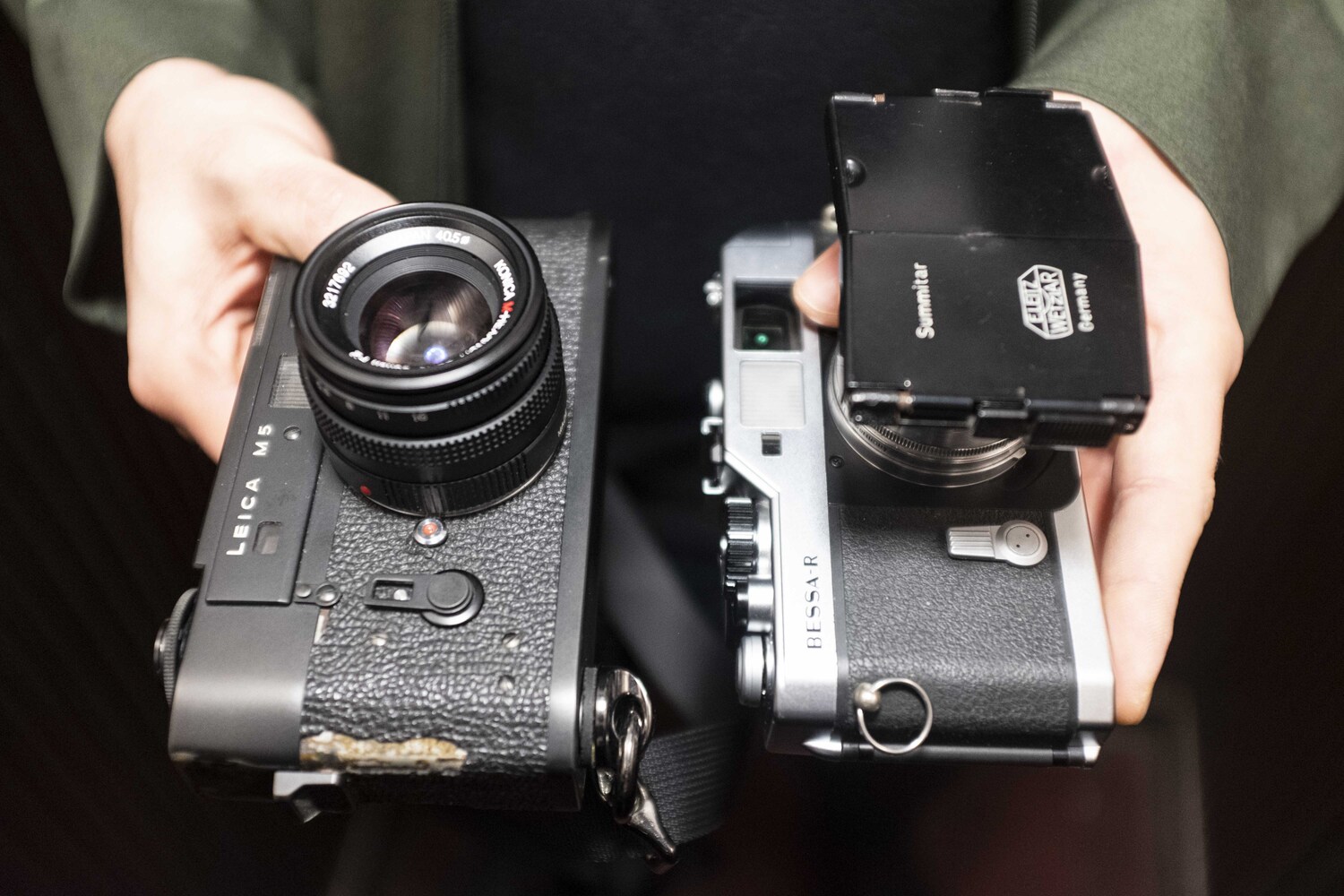
Two cameras too innovative for their time, side by side and 30 years apart.
But it was more than just a fun afternoon. The entire project behind this camera is in fact a pleasant breath of fresh air. For those who are passionate about analog photography like me, being able to enjoy something new is eventually liberating. Too often the film world is cloaked in this vintage aura that doesn’t do it justice. On the contrary, photography is born and thrives on technological developments, new ideas, and steps forward: considering it a relic of the past unable to innovate is one of the causes of its near disappearance. Opening a camera of 20 years ago for the first time in 2020, a year that puts us back in front of history, is quite more than a pleasant gesture. It is a good reminder to photography is historically innovative, even and especially analog photography.
